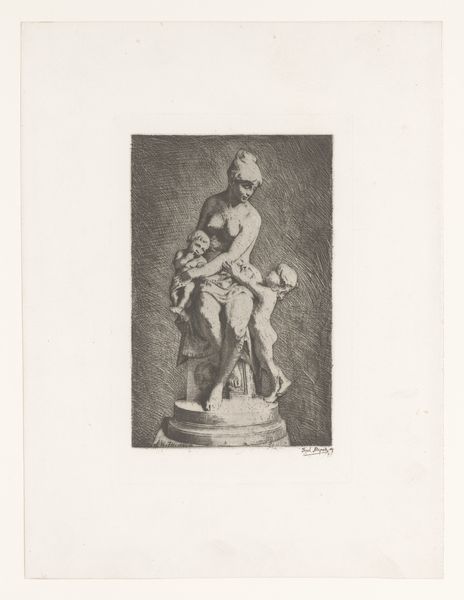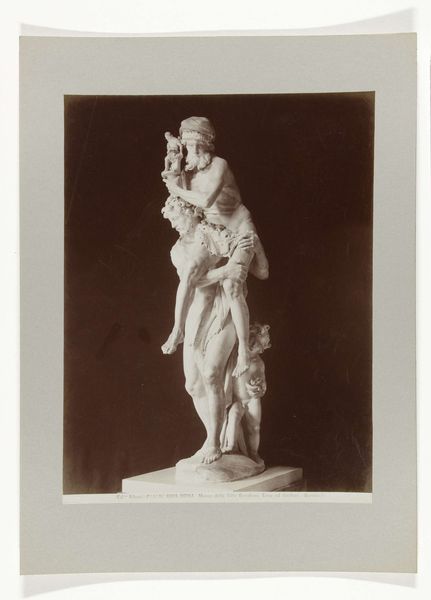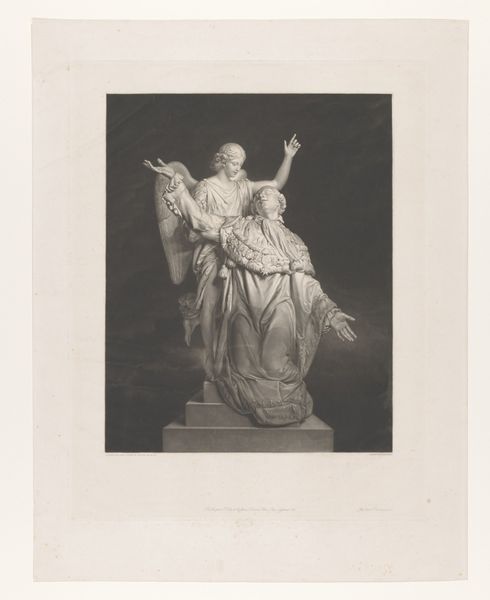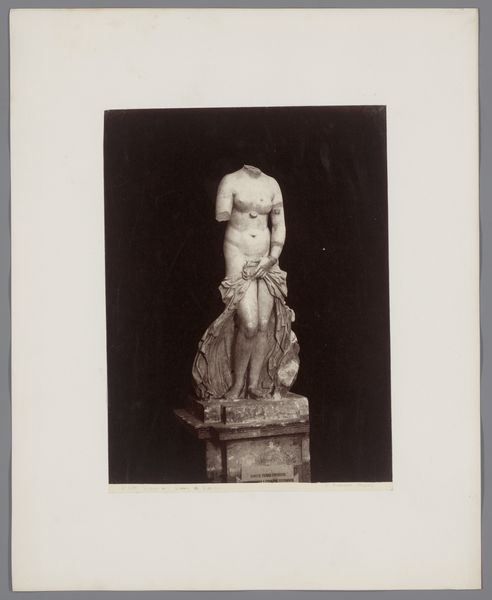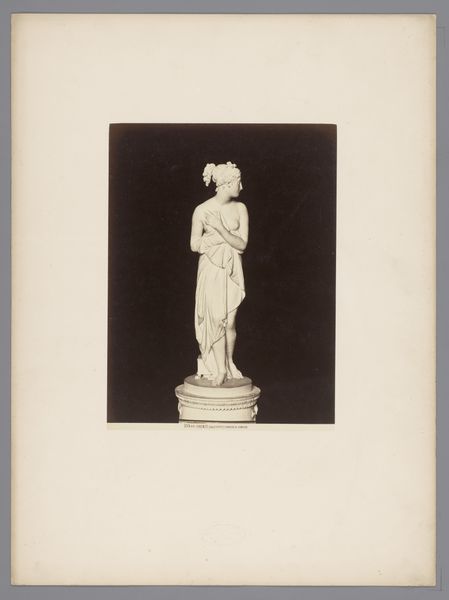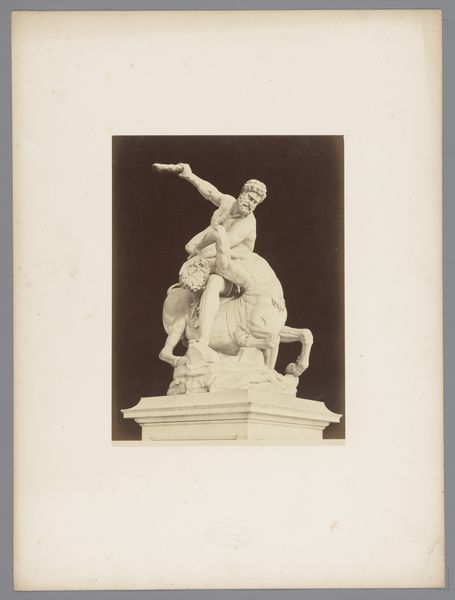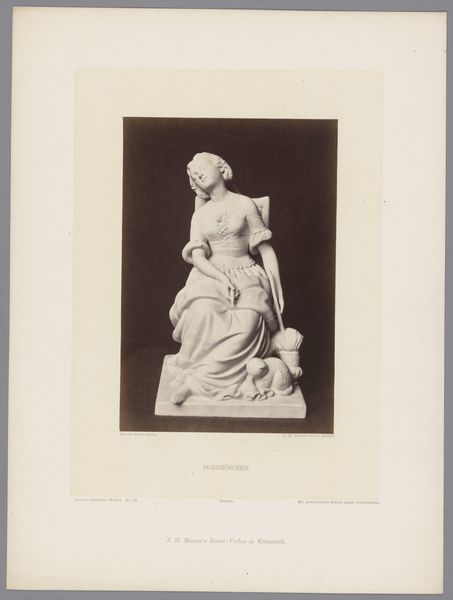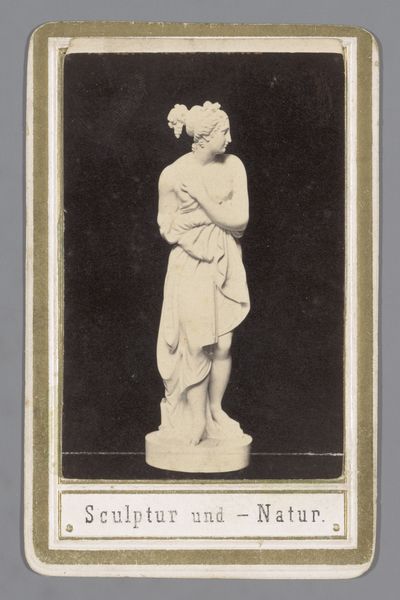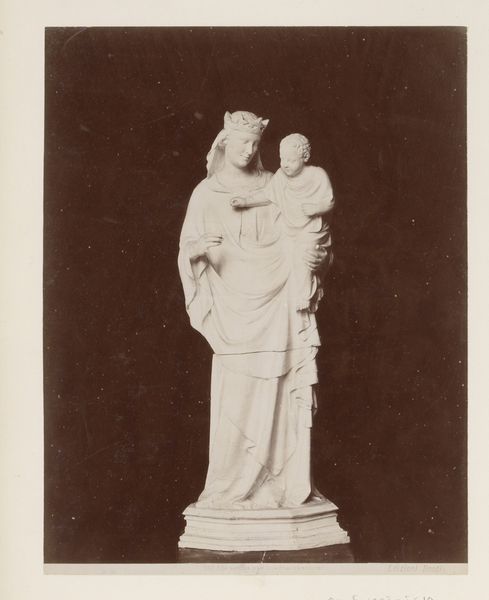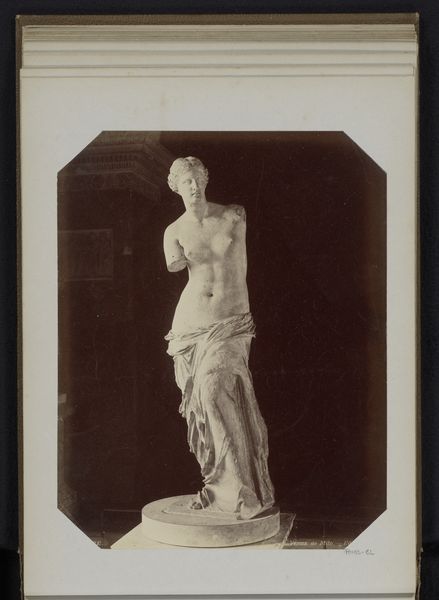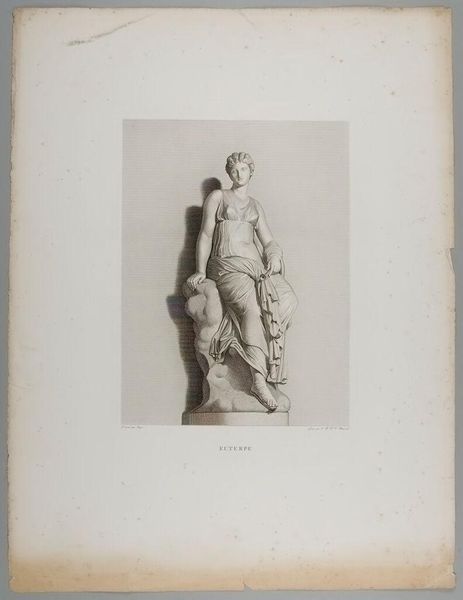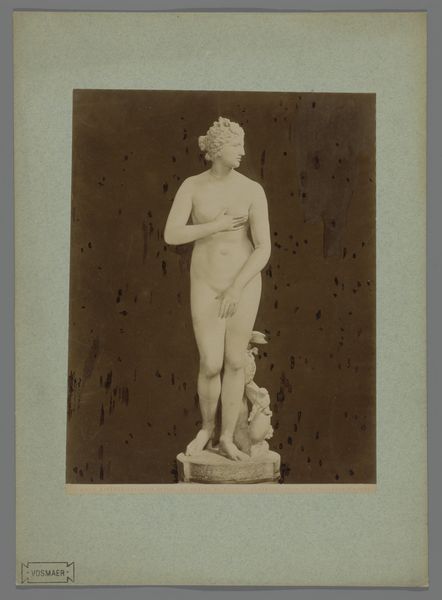
Dimensions: height 239 mm, width 158 mm
Copyright: Rijks Museum: Open Domain
Josué Dupon created this print, "Beeld van Caritas met twee kinderen," using etching, a process of using acid to cut into a metal plate, allowing for finely detailed and reproducible images. The linear quality so well achieved in etching is evident in the depiction of the female figure, a representation of charity, with two children. Note the way the etched lines define her form and the soft shading that gives volume to the figures. It’s a labor-intensive, indirect process, yet it offers a high degree of control to the artist. Dupon used this technique to create a sense of depth and texture, and the tonal variations achieved by carefully controlling the acid. Dupon’s choice of etching, rather than more painterly methods, speaks to a desire for precision and replicability, key values of industrial production that were increasingly influential in the art world during the late 19th and early 20th centuries. By considering the materials and methods of production, we gain insight into the artistic choices and social context that shaped this image, challenging traditional distinctions between fine art and craft.
Comments
No comments
Be the first to comment and join the conversation on the ultimate creative platform.
